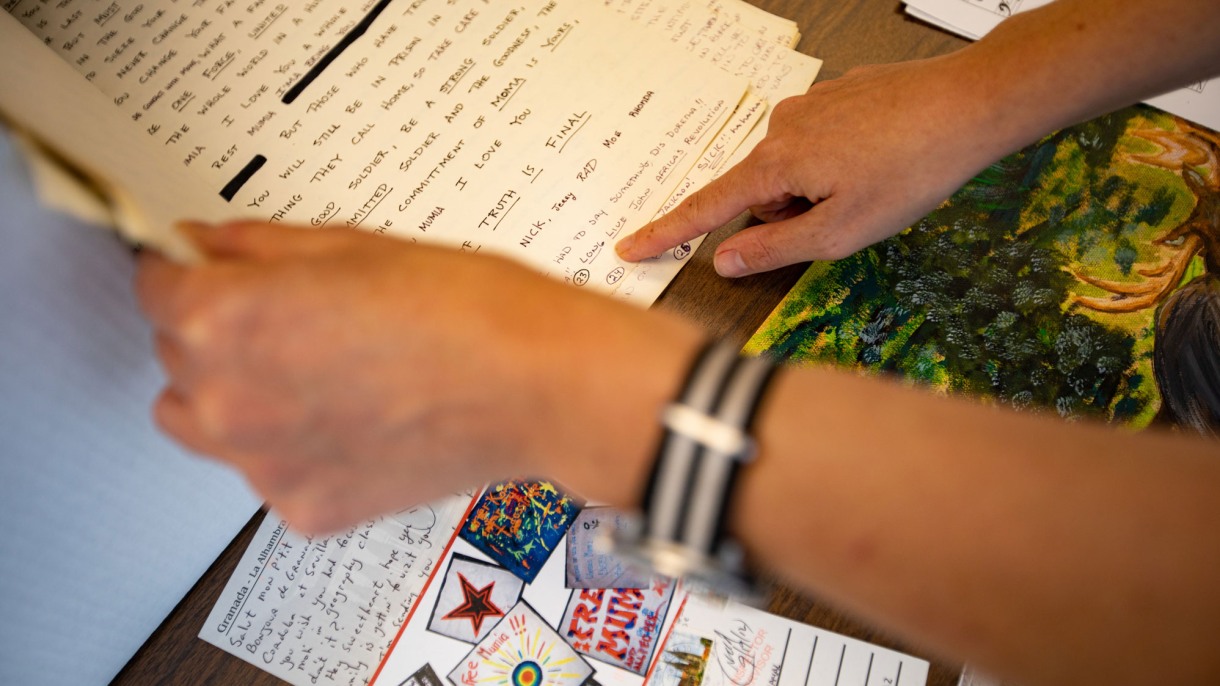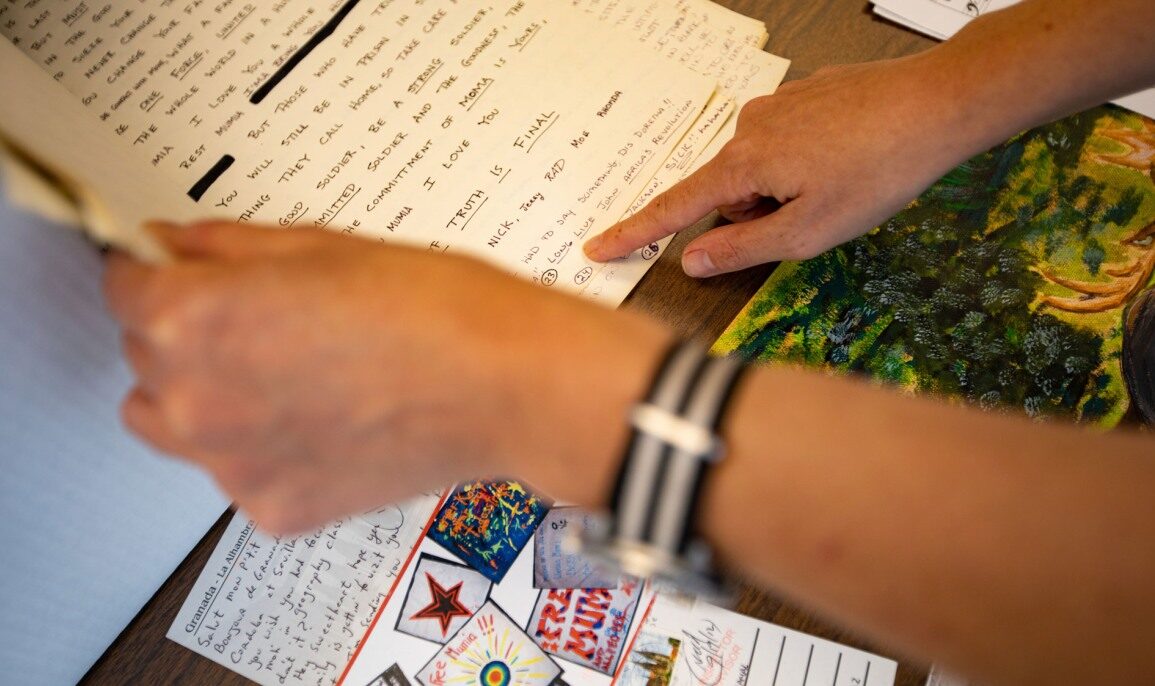
Solitary confinement, up close
Strauss said elements from “Mumia Abu-Jamal: A Portrait of Mass Incarceration” will be displayed across four centers of scholarship at Brown: the John Hay Library, theRockefeller Library, the Center for the Study of Race and Ethnicity in America and theSimmons Center for the Study of Slavery and Justice. Its main site is the John Hay Library, where original material from the Mumia Abu-Jamal papers, including books, journals and prison correspondence, will be displayed to the public for the first time. In creating the exhibition, the curatorial team partnered with organizations that are actively addressing broader policy issues centered on incarceration, including the People’s Paper Co-op, a women-led art and advocacy project at the Village of Arts and Humanities in North Philadelphia, which is featured in the exhibit.
The Rockefeller Library will display posters and ephemera from Revolution Books in Harlem, New York, a site of organizing for and repository of information on the various “Free Mumia” movements from around the globe, which declare Abu-Jamal’s innocence. Exhibition spaces at CSREA and the Simmons Center will showcase some of Abu-Jamal’s musical compositions and visual artwork, exploring the intricate relationship between art, incarceration and social consciousness.
The Hay Library will also display some of Abu-Jamal’s personal belongings, such as a prison-issue radio and a pair of glasses; court documents from his trial and appeals; a range of his writings from solitary confinement; and historical information about prison design and architecture. The exhibit focuses on elements of Abu-Jamal’s advocacy work for other imprisoned individuals, including records of his successful lawsuit against the state of Pennsylvania, which allowed him and many other incarcerated people to receive antiviral treatment for hepatitis C. Visitors will have the opportunity to view a replica 6-by-9-foot solitary confinement cell much like the one where Abu-Jamal was once kept for 22 hours a day and from which his voluminous collection originated.
Lead exhibit curator Christopher West, curator of the Black diaspora for the John Hay Library noted: “There is ample evidence dating back to the 1840s that solitary confinement can be a psychologically damaging experience. What’s less studied is the impact incarceration can have on a person’s physical health. We hope that the materials we share here will drive scholars to the many health-related personal accounts in the Mass Incarceration Lab project.”
West said he curated the exhibition alongside Justin Li and Sophie Butcher, Brown undergraduates who became passionate about sharing the stories of incarcerated people after taking Van Cleve’s Mass Incarceration Lab course. Together, West, Li and Butcher combed through more than 80 boxes of materials to choose the items in the exhibition, also assembling a digital companion to the exhibition that allows visitors to dive deeper into the materials. West also worked with Ed Lindstrom, a senior expert in library facilities and building safety, to construct the replica cell.
“People from every corner of Brown played a role in putting together this exhibition, and I think that collaboration is what has made it so rich and educational,” West said. “That’s part of the reason why the exhibition extends across campus: the University community is working together to highlight the voices of incarcerated people, and the exhibition and symposium work together to share these stories.”
This post was originally published on this site be sure to check out more of their content.







